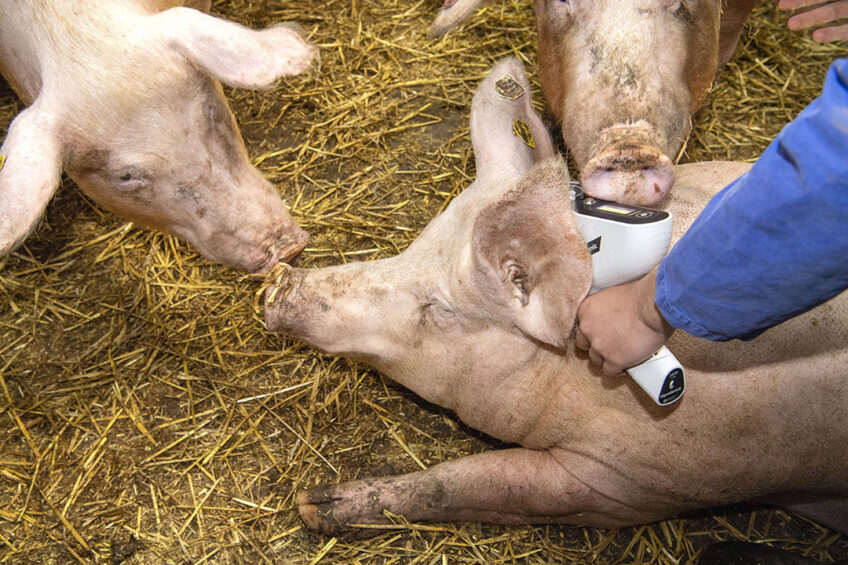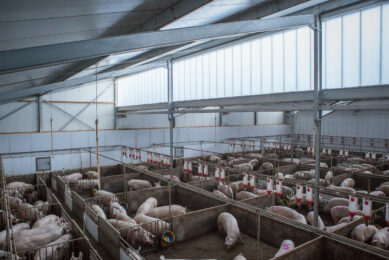Is antibiotic reduction related to pig welfare?

Inappropriate use of antibiotics leads to antibiotic resistance. Although several countries banned the use of antibiotics for growth promotion and prophylactic purposes, the global use of antibiotics is still quite extensive. Therefore, it is important to identify the main on-farm stressors in intensive swine production systems, to evaluate their negative impacts on pig health and welfare, and to find strategies to assess how welfare and health improvement of pigs contribute to antibiotic reduction in swine industry.
Animal welfare and environmental issues have been major concerns in the past decades. According to the World Organization for Animal Health “an animal experiences good welfare if it is healthy, comfortable, well-nourished, safe, is not suffering from unpleasant states, such as pain, fear, and distress, and is able to express behaviours that are important for its physical and mental state”.
It is estimated that by 2030 the use of antibiotics on farms increases by 11.5%
However, high stocking densities in intensive swine production systems predispose pigs to stressors, environmental pathogens, and the spread of respiratory and enteric diseases. As a result, it is estimated that by 2030 the use of antibiotics on farms increases by 11.5%.
How does stress cause disease?
When the stability of physiological parameters such as pH, oxygenation, temperature, and blood glucose is threatened by stressors, the body starts allostatic process to restore the balance. However, this process triggers the stress response, prepares an alarm response, and stimulates cortisol secretion which has metabolic, cardiovascular, and immunological effects. The excessive activation of allostatic process results in distress that causes suffering and reduces animal welfare.
Biological defense
Stressors activate a biological defense that triggers a behavioural response, autonomic nervous system response, neuroendocrine response, and immune response. Chronic stress reduces the natural ability of pigs to mount a successful response to an immune challenge. In addition, pigs with high production performance are more vulnerable to disease because they allot metabolic resources for growth at the expense of the immune system.
What are the main on-farm stressors?
The main on-farm stressors in intensive swine production systems are (a) stressors associated with housing environment and (b) stressors from management practices. The first group is related to the physical limitations of intensive housing including restriction to movement, socialisation and expression of natural behaviours, and unfavourable climatic conditions such as thermal stress. The second group is related to feeding management, prenatal stress, neonate management, weaning, early transport, mixing unfamiliar animals, mutilations, and human-animal interactions. These housing and management factors are a source of distress in pigs and cause diseases that antibiotics commonly preventor treat.
Most farmers use antibiotic treatment of all pigs around stressful management practices, such as castration, weaning, and finishing period
Pig welfare and antibiotic use
On-farm antibiotic use is to prevent or treat respiratory, enteric, and reproductive diseases caused by stressors. Studies showed that a lot of highly stressful management practices happen in pigs’ early life and piglets are the most treated age group with antibiotics. In addition, most farmers use antibiotic treatment of all pigs around stressful management practices, such as castration, weaning, and finishing period. Cross fostering and low body weight or poor weight gain in piglets are also associated with antibiotic use. Furthermore, poor air quality and hygiene accompanied with improper facility conditions can cause increased antibiotic use for respiratory diseases. Insufficient drinking equipment and lack of enrichment along with high stocking density are related to antibiotic use for joint infections and tail biting.
How to tackle the issue?
Improving housing and environmental enrichment is a key factor to reduce distress and boredom in pigs. Good housing ensures thermal comfort, provides the opportunity for pigs to move and explore, reduces the occurrence of lameness, decreases agonistic interactions and stress, improves maternal behaviour in sows and social behaviour in piglets and increases piglet resistance and resilience when challenged with pathogens.
Environmental enrichment enables pigs to express higPosthly motivated innate behaviors, promotes positive affective states, and improves immune system development and the establishment of gut microbiota in early life. Moreover, positive human-animal interactions ensure on-farm swine welfare and reduces the antibiotic use.
Concluding remarks
On-farm stressors impact pig’s resistance when challenged with pathogens, increase the risk of diseases, and enhance global antibiotic use in swine industry. Studies show that improving pig welfare using proper management and housing strategies will reduce antibiotic use. However, industry, consumers, and governments need to support swine farmers to move toward a sustainable approach and to rationally reduce on-farm antibiotic use.











